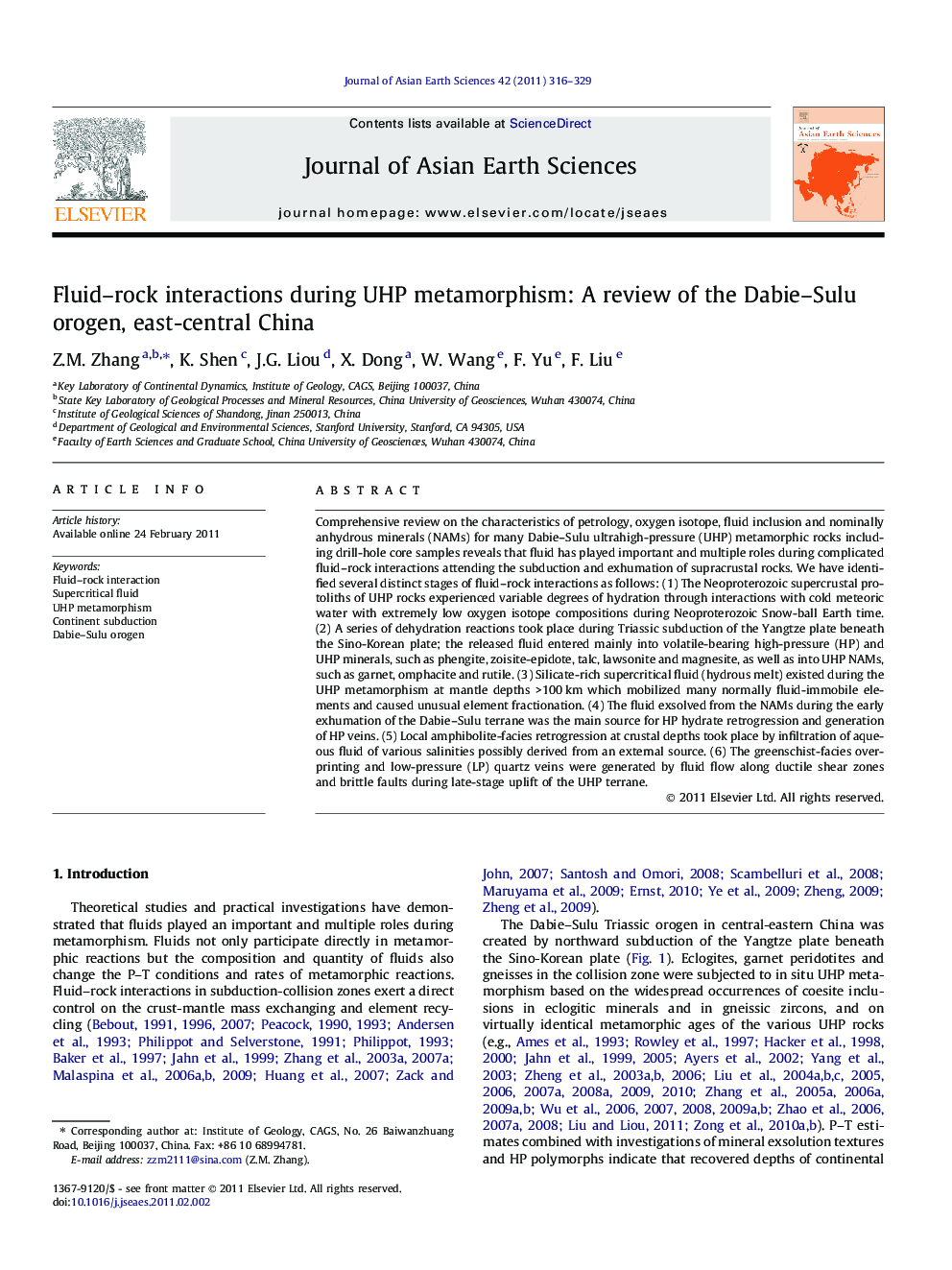| کد مقاله | کد نشریه | سال انتشار | مقاله انگلیسی | نسخه تمام متن |
|---|---|---|---|---|
| 4731857 | 1356825 | 2011 | 14 صفحه PDF | دانلود رایگان |

Comprehensive review on the characteristics of petrology, oxygen isotope, fluid inclusion and nominally anhydrous minerals (NAMs) for many Dabie–Sulu ultrahigh-pressure (UHP) metamorphic rocks including drill-hole core samples reveals that fluid has played important and multiple roles during complicated fluid–rock interactions attending the subduction and exhumation of supracrustal rocks. We have identified several distinct stages of fluid–rock interactions as follows: (1) The Neoproterozoic supercrustal protoliths of UHP rocks experienced variable degrees of hydration through interactions with cold meteoric water with extremely low oxygen isotope compositions during Neoproterozoic Snow-ball Earth time. (2) A series of dehydration reactions took place during Triassic subduction of the Yangtze plate beneath the Sino-Korean plate; the released fluid entered mainly into volatile-bearing high-pressure (HP) and UHP minerals, such as phengite, zoisite-epidote, talc, lawsonite and magnesite, as well as into UHP NAMs, such as garnet, omphacite and rutile. (3) Silicate-rich supercritical fluid (hydrous melt) existed during the UHP metamorphism at mantle depths >100 km which mobilized many normally fluid-immobile elements and caused unusual element fractionation. (4) The fluid exsolved from the NAMs during the early exhumation of the Dabie–Sulu terrane was the main source for HP hydrate retrogression and generation of HP veins. (5) Local amphibolite-facies retrogression at crustal depths took place by infiltration of aqueous fluid of various salinities possibly derived from an external source. (6) The greenschist-facies overprinting and low-pressure (LP) quartz veins were generated by fluid flow along ductile shear zones and brittle faults during late-stage uplift of the UHP terrane.
Research highlights
► UHP rocks experienced dehydration reactions during the continental subduction.
► The released fluids entered into UHP hydrous minerals and NAMs.
► Silicate-rich supercritical fluid existed during the peak-UHP metamorphism.
► Hydrous melt mobilized fluid-immobile elements and caused unusual element exchange.
► Retrogression of UHP rocks derived from the infiltration of the external fluids.
Journal: Journal of Asian Earth Sciences - Volume 42, Issue 3, 10 August 2011, Pages 316–329